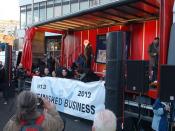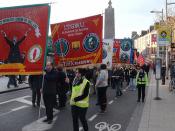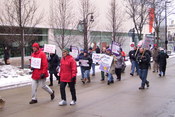Introduction.
Workplace relationships invariably involve conflict. Because there are different perspectives on what constitutes conflict, it can be conveyed in a wide variety of ways. One of the most basic decisions employees have to make when experiencing dissatisfaction is whether or not they should express their discontent. Some conflict can be expressed individually, or collectively.
Strike activity has declined dramatically in the past few years in Australia. However, that does not essentially mean that workers are generally satisfied with their pay and conditions. Although strike is seen being synonymous with industrial conflict, removing it does not necessary mean a decline in conflict. Strike is the most common and most visible expression, but conflict with the employers may also take a more covert form such as absenteeism or sabotage.
Conflict and Strikes.
Relationships in the workplace involve conflict because of the nature of the employer and employee relationship itself. Edwards (Edwards, 2003) points out that managers and workers are "locked into a relationships that is contradictory and antagonistic" (p16).
It is contradictory as managers try to achieve control and innovation at the same time, both of which require fairly different management approaches. The relationship is also antagonistic as managers attempt to generate a surplus from the labour of employees. Conflict is inevitable as employers and employees pursue their own objectives and interests (Analoui & Kakabadse, 1993). Critical factors such as income distribution and job security contribute highly toward industrial conflicts (Hyman, 1989). One of the hardest decisions that people have to make when experiencing dissatisfaction in the workplace is whether or not they should express this discontent (Analoui & Kakabadse, 1993).
Strikes are extreme examples of discontent in the workplace and are costly in both human and economic terms (Dreu, Dierendonck, & Dijkstra, 2004; Kelloway, Cantano, & Carrol, 2000). Strike describes...


